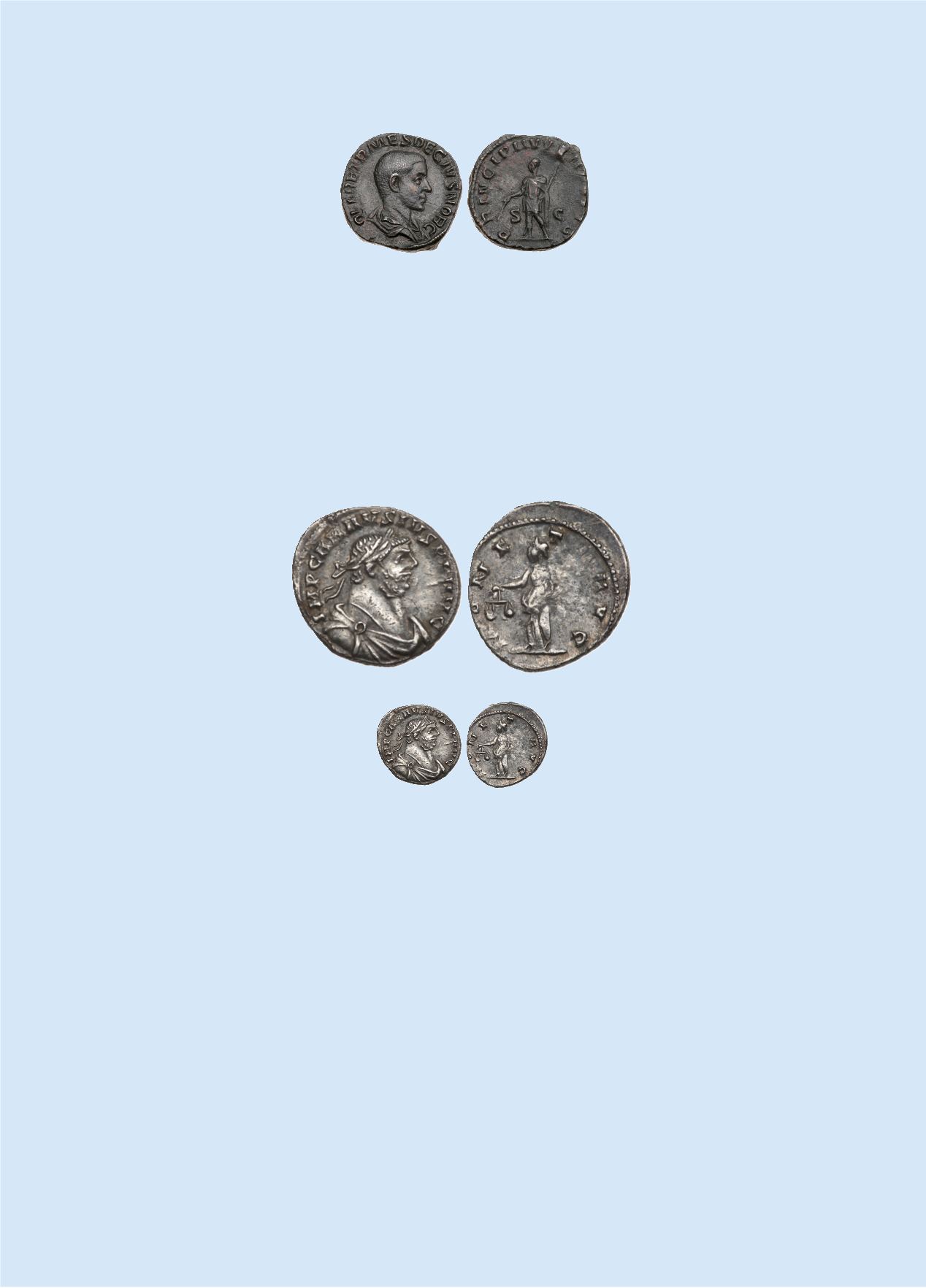

1249
Herennius Etruscus. Æ Sestertius (19.36 g), as Caesar, AD 250-251. Rome, under Trajan Decius, AD 250.
Q HER ETR MES DECIVS NOB C, bare-headed and draped bust of Herennius Etruscus right. Rev.
PRINCIPI IVVENTVTIS, S C across field, prince standing facing, head left, holding wand and spear. (RIC
171a).
Scarce.
Dark, blackish brown patina, lightly smoothed. Choice Very fine / Very fine.
$ 400
Rare Silver Denarius of Carausius
1250
Carausius. Silver Denarius (3.38 g), Romano-British Emperor, AD 287-293. London(?), AD 286/7. IMP
CARAVSIVS P F AVG, laureate, draped and cuirassed bust of Carausius right. Rev. MONE-T[A] AVG,
Moneta standing facing, head left, holding scales and cornucopiae. (RIC 717; RSC 71-3).
Rare
.
Toned.
Choice very fine.
$ 3,500
In AD 287, Carausius, a commander of Roman forces in Britain of Gallic descent, raised the banner of revolt and proclaimed
himself independent emperor of a Romano-British empire that included the province of Britannia as well as parts of northern Gaul.
In order to give himself an air of legitimacy and to maintain the loyalty of his followers, Carausius struck several rare series of good
silver denarii - something that had not been struck in the Roman empire since the mid-third century AD. By doing this he gave the
impression of greater success and legitimacy than the Tetrarchs Diocletian and Maximianus who wanted to remove him from power.
The latter struck billon radiate coins with only a very minimal silver content. Unfortunately for Carausius, while he did manage
to briefly raise the intrinsic value of his Romano-British coinage to the shame of his contemporaries in Rome, he was ultimately
assassinated by Allectus, his own finance minister, in AD 293.



















